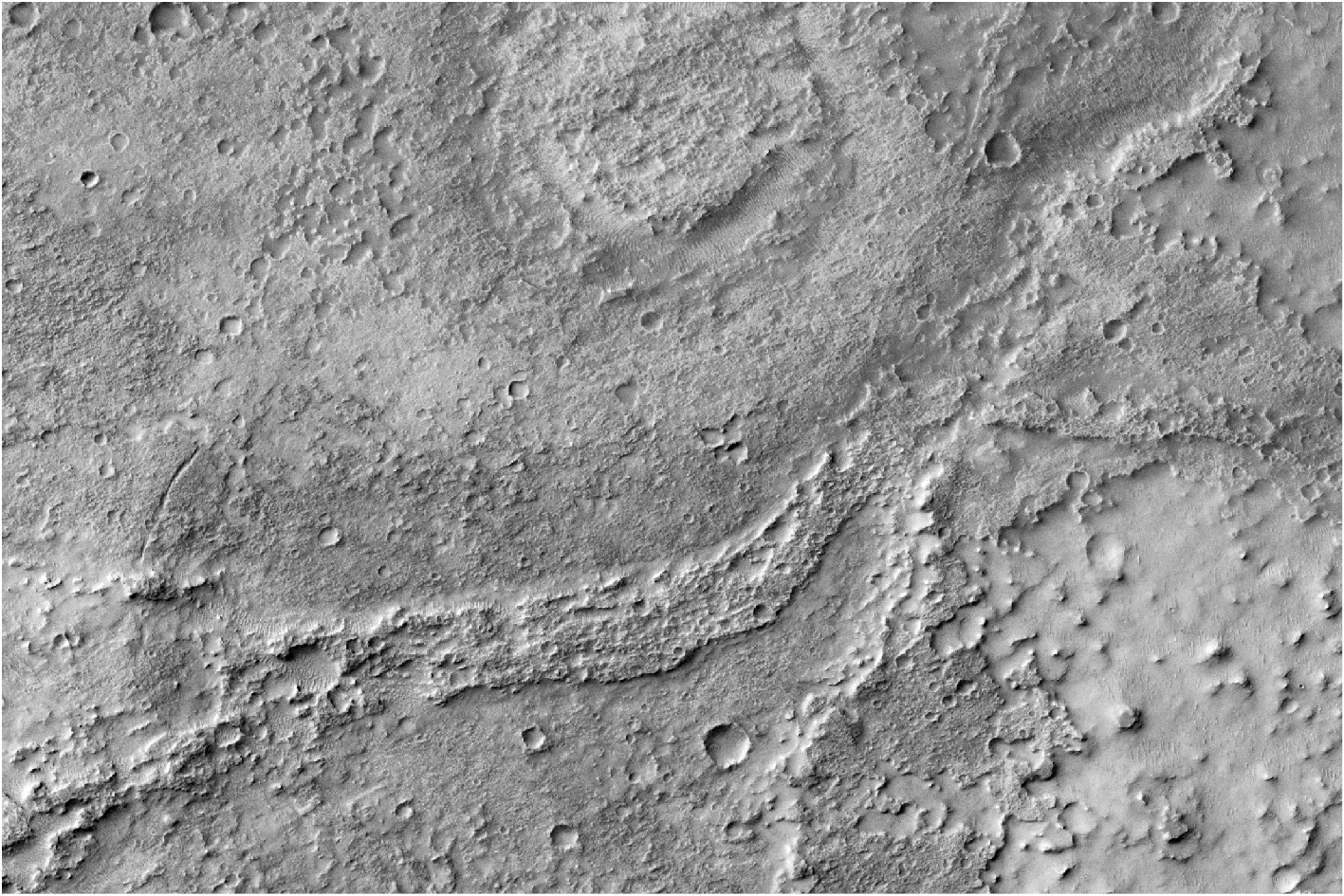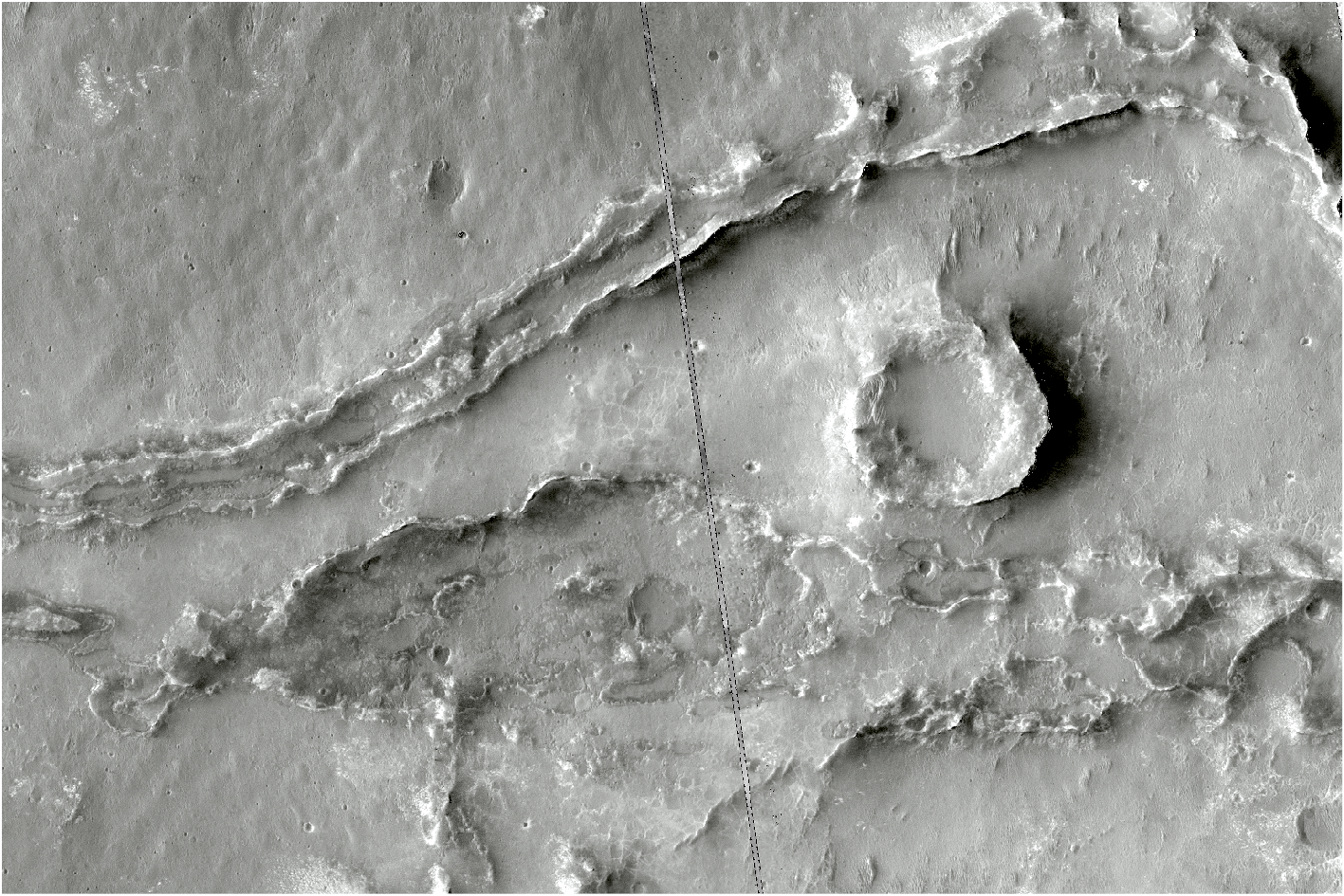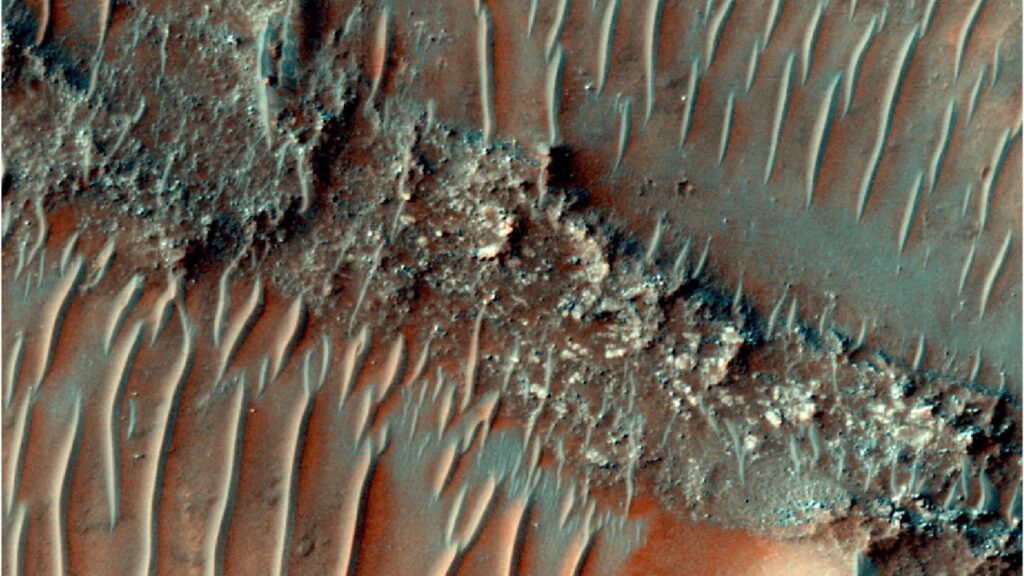Mars was a rainier, wetter place than planetary scientists previously thought, according to a new study of ancient, inverted river channels that span more than 9,000 miles (14,484 kilometers) in the Red Planet’s southern Noachis Terra region.
“Our work is a new piece of evidence that suggests that Mars was once a much more complex and active planet than it is now, which is such an exciting thing to be involved in,” study leader Adam Losekoot of the U.K.’s Open University said in a statement.
We’ve known Mars was once a wet planet ever since the Mariner 9 orbiter mission from the ’70s photographed a surface covered in dried-up river channels. These channels were dated back to over 3.5 billion years ago. However, channels cut into the ground are not the only evidence for running water on Mars.
When that water ran-off, or evaporated, it left sedimentary deposits. Sometimes we see these in craters that were once lakes filled with water: NASA’s Curiosity rover is exploring Gale Crater, which has a central three-mile-tall (five-kilometer-tall) peak covered in sediment.
Other times, these sediments were laid down on river beds. Over the eons, the sediments would have hardened, while the river channels and the land around them would have weathered and eroded away. That left the sediments, which are more resistant to erosion, sticking out as tall ridges. Geologists today call them fluvial sinuous ridges, or, more plainly, inverted channels.
Now, Losekoot, who is a Ph.D. student, has led the discovery of a vast network of these channels in Noachis Terra based on images and data taken by the High Resolution Imaging Science Experiment (HiRISE) camera and the Context Camera on NASA’s Mars Reconnaissance Orbiter, and the Mars Orbiter Laser Altimeter (MOLA) on the defunct Mars Global Surveyor mission.
Related: Could signs of Mars life be hidden in its thick layers of clay?

Previously, Noachis Terra had not been given due attention because it lacked the more classical river channels that form more obvious evidence of water. However, by mapping the network of inverted channels, Losekoot realized there was lots of evidence there had once been plentiful water in the region.
“Studying Mars, particularly an under-explored region like Noachis Terra, is really exciting because it’s an environment which has been largely unchanged for billions of years,” said Losekoot. “It’s a time capsule that records fundamental geological processes in a way that just isn’t possible here on Earth.”
Some of the inverted channels appear as isolated segments that have survived the elements for billions of years. Others are more intact, forming systems that run for hundreds of miles and stand tens of yards tall.

Such a widespread network of inverted channels does not suggest these channels were caused by flash floods, argues Losekoot. Rather, they seem to have formed in stable climatic conditions over a geologically significant period of time during the Noachian–Hesperian transition, which was the shift from one geological era into the next around 3.7 billion years ago.
What’s particularly intriguing is the most likely source of water to have formed these inverted channels is precipitation — be it rain, hail or snow. Indeed, given the size of the inverted channel network in Noachis Terra, this region of Mars may have experienced lots of rainy days in a warm and wet climate.
It’s more evidence that Mars was once more like Earth than the cold and barren desert it is today.
Losekoot presented his findings at the Royal Astronomical Society’s National Astronomy Meeting held at the University of Durham in the U.K., which ran between July 7 and July 11.
This article was originally published on Space.com.
